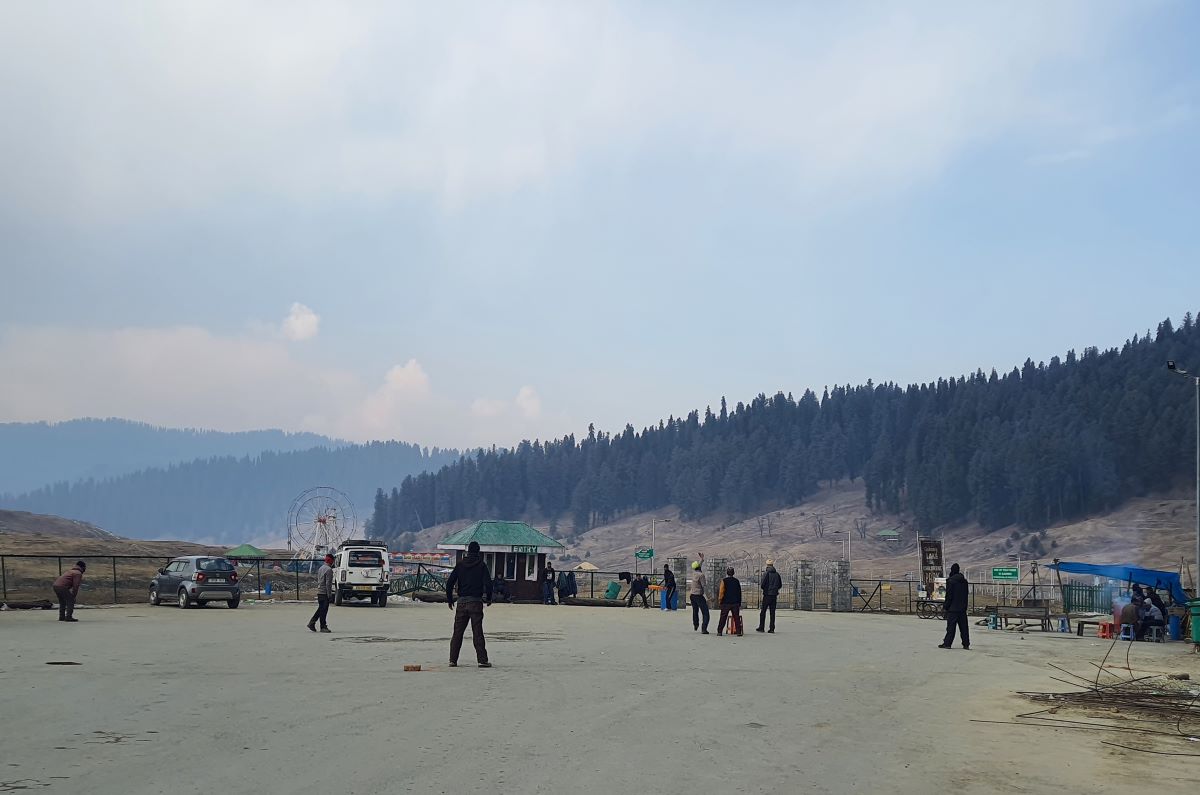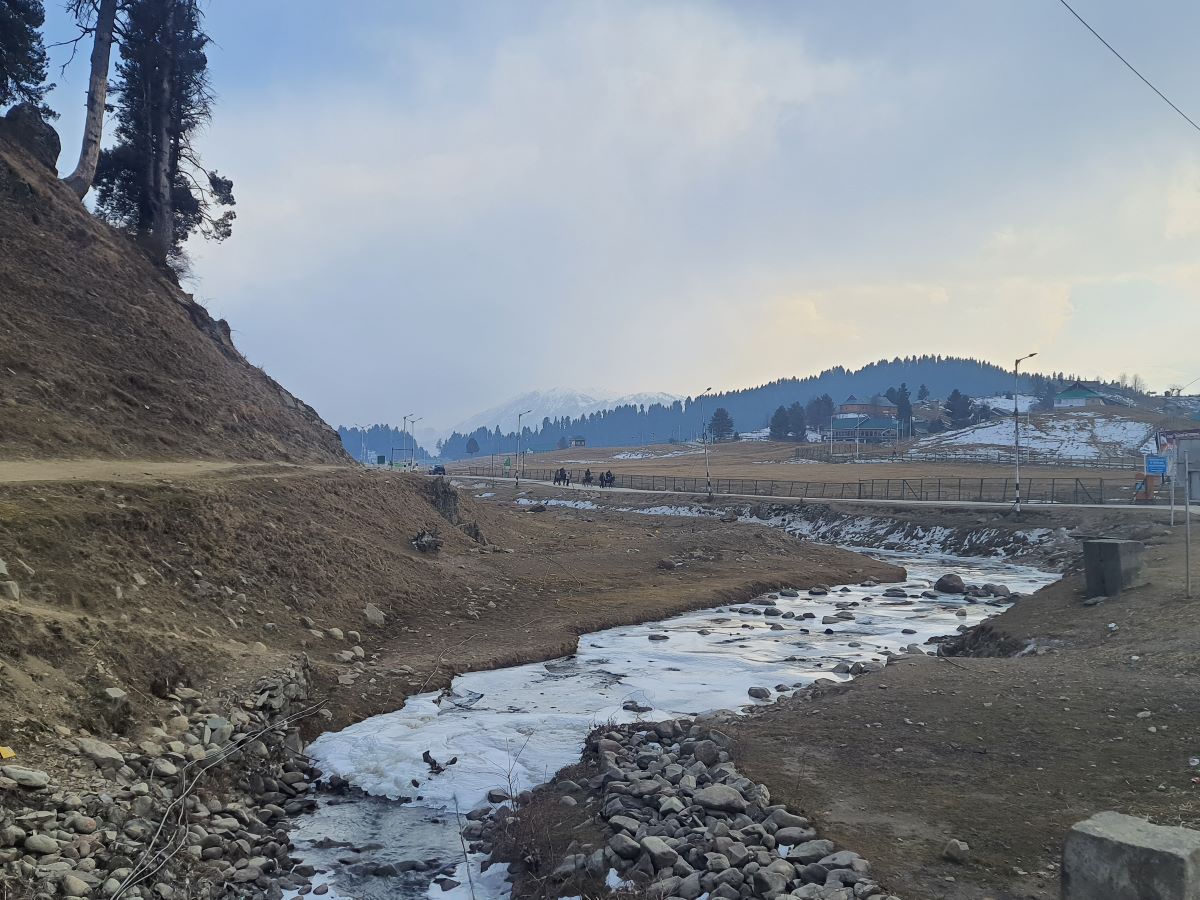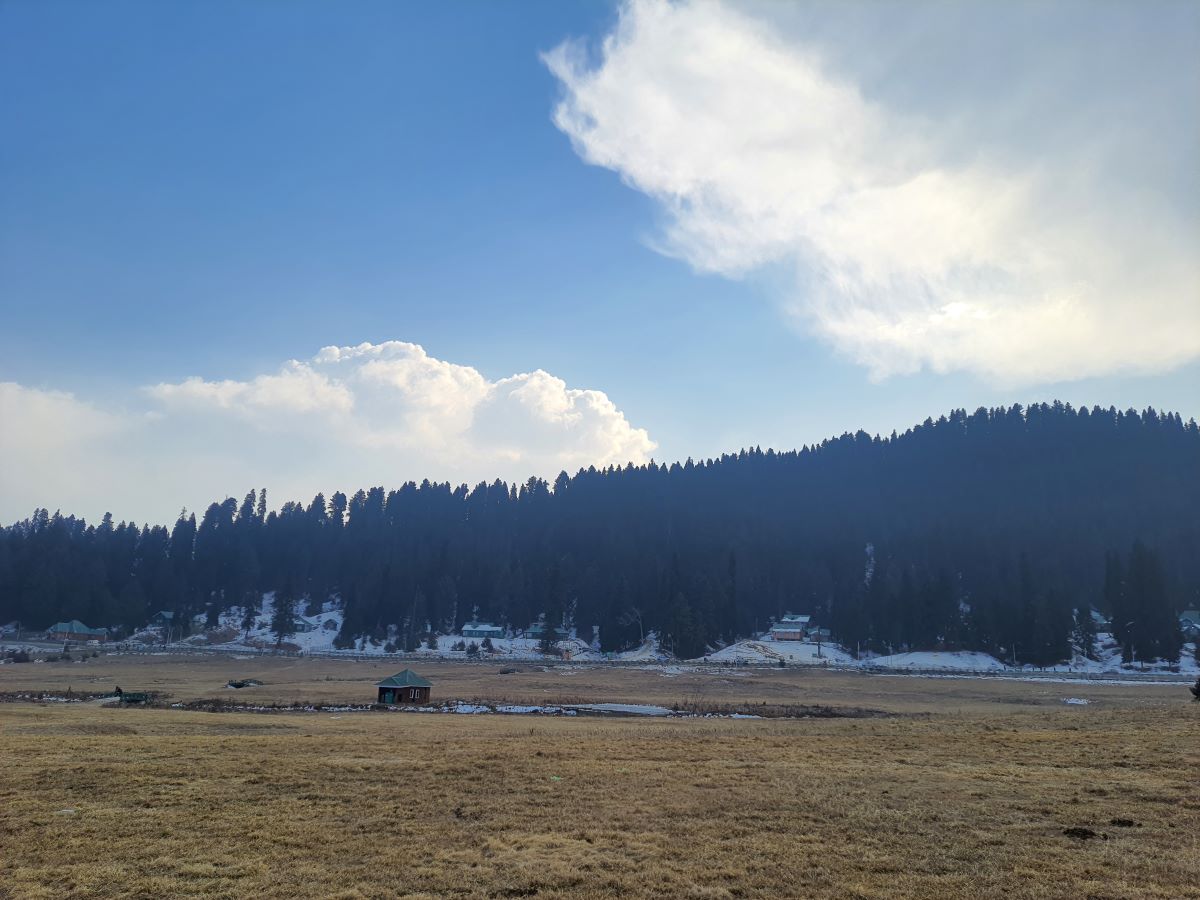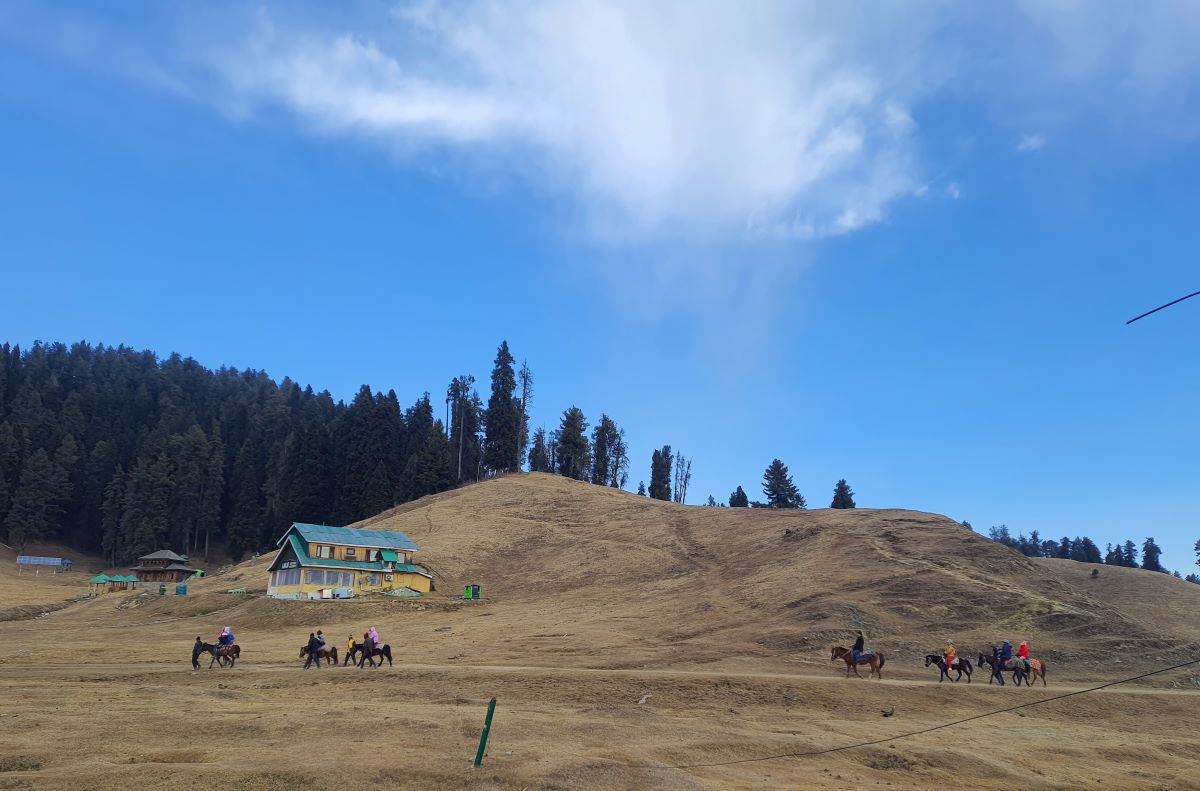“See how deserted Gulmarg looks,” Aahil laments. “This grass is supposed to be like this in summer, not now.”
In the backdrop of deserted ski-slopes and frozen waters, many skiing instructors along with sledge riders and pony riders are playing cricket. It’s a game change for the meadow where skiing would be lock, stock and barrel in winter. But in this cloudy day in Gulmarg—Kashmir’s winter wonderland—the unconventional cricketers are now killing their time after facing a barrage of cancelled or rescheduled bookings.
The picturesque valley of Kashmir, blanketed in pristine snow this time of the year, has been grappling with a distressing trend—decreasing snowfall. This climatic change is not only posing a threat to the region’s famed winter sports and tourism but also triggering repercussions on the local economy and the fragile mountainous environment. However, the weather pattern is profoundly impacting the lives of Gulmarg’s skiing instructors, sledge riders, street vendors, pony riders, and hoteliers, who have long thrived on the region’s winter wonderland.
Gulmarg has traditionally drawn enthusiasts from far and wide to its slopes. However, the unpredictability and diminishing frequency of snowfall have curtailed the skiing and snowboarding season this year. Even ski resorts that once were buzzing with activity are now struggling to offer adequate slopes and activities, resulting in a decline in local and tourist influx and revenue. Skiing instructors, who depend on a robust winter season, are finding themselves grappling with gloom. The livelihoods of these skilled professionals are directly linked to the presence of snow, making adaptation and alternative income sources essential for their economic stability.
The diminished winter sports season is also affecting the income of vendors, hoteliers, sledge riders, pony riders, and others who cater to the tourism industry—exacerbating socio-economic challenges.

Game Change – Cricket Has Replaced Skiing in Gulmarg this Snowless Winter. [FPK Photo/Mohsina Malik.]
Not only these tourism players, but their fragile ecosystem is also under threat. Shabir fears water shortages and other complications in summer. “Right now,” he says, “we’re looking for alternatives. Like behind me, this is the pristine lake. We’re taking some visitors for ice skating and trekking so that we can sustain ourselves and earn some money to meet our ends and the requirements of families.”
Many of these young skiing instructors are witnessing this drastic change for the first time. “Gulmarg is hardly getting any footfall these days,” Shabir continues. “There is no rush. Everyone is sitting back at home, and it is troubling us in terms of livelihood. We wholly depend on this seasonal surge, but what can we do? We are hopeless and shattered.”
Shabir and others were expecting Khelo India to happen, but that is also postponed until February 2. The winter sports gala used to be their earning season—but everything is rippling and crushing. At this time, ski schools used to train ski riders and snowboarders. Nothing is happening now.

Forlorn and Frozen. [FPK Photo/Mohsina Malik.]
“We will face the brunt anyway,” Aahil laments. “See how deserted Gulmarg looks. This grass is supposed to be like this in summer, not now. We’re seeing blossoms in nearby areas, and there is a shortage of water in some of the villages as well. We can only hope and pray that snowfall will happen as soon as possible.”
This is the first time Aahil is sitting back without work in January. It breaks his heart to see the mountains snowless. If it snows, his work will commence, and if not, then all he can do is wait. “Many are already looking for other means of living,” he says. “What else can one do? We can’t keep sitting and holding hands. We’ve to do something other than witness our loss.”
Before this seasonal storm, 26-year-old snowboarder Syed Nasir Ali from Srinagar’s Hawal area was looking forward to thrill on snow-slopes. But the forlorn situation is now making him frown. “I can’t see snowless Gulmarg,” Nasir says. “It’s all global warming, and we’re helpless. I want this weather to be normal again with no shifts, so that I can live my dream of snowboarding.”
On the other hand, Muzaffar Khan, who has been sledge riding for 35 years is getting restless. The snowless situation, he says, is taking toll on his tribe. “Our livelihood depends on the winter season,” he says. “When visitors come for skiing, we take them on sledges, but there is no one now. Who do we take? We are filled with emptiness.”

Gloom in Gulmarg. [FPK Photo/Mohsina Malik.]
Beyond the immediate economic and recreational impacts, the dearth of snowfall in Kashmir carries significant environmental concerns. In the past two months, the region has experienced a troubling deficit in snowfall, intensifying concerns over the environmental crisis and the livelihood of many who depend on winter tourism.
Experts claim that the declining snowfall in winters and the early melting of snow in summers are clear signs of the impact of climate change, adding that if this continues, it could have severe consequences for the livelihoods and ecosystem of the entire region.










